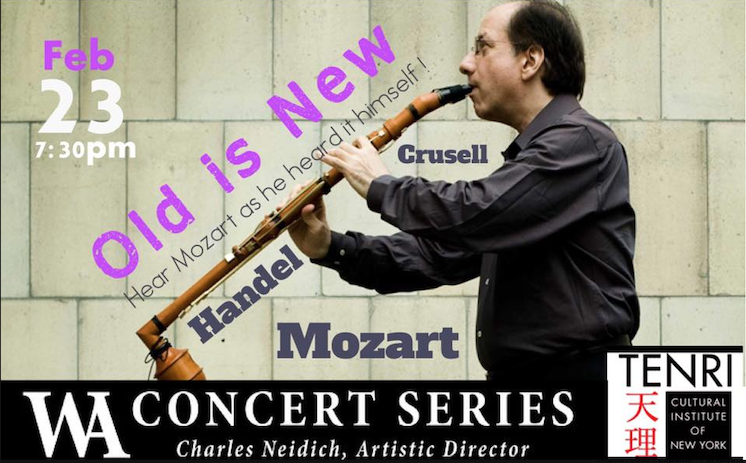Wa Concert Series presents Old is New: Historical Instruments with Cynthia Roberts in Review
Charles Neidich, artistic director, clarinet; Ayako Oshima, clarinet; Cynthia Roberts, violin; William Purvis, French horn; Chloe Fedor, violin; Edson Sheid, viola; Madeline Bouissou, cello
Tenri Cultural Institute, New York, NY
February 23, 2019
New York’s intimate and impeccable Wa Concert Series continued its standard of excellence, while opening ears and hearts with a beautiful program of historically informed performances helmed by the veteran violinist Cynthia Roberts. All the musicians speak the grammar of the Classical (or Baroque) period perfectly, yet they never sound like they are giving you a dry lesson on the music. Each piece is lived anew, hence the “new.” Phrasing, articulation, transparency of sonority, sensitivity to harmonic change and chord weight, and flexibility: all were delectable.
The evening opened with the Overture in D Major for two clarinets and French horn, HWV 424, one of the earliest uses of the clarinet, by G.F. Handel, no less. Apparently he knew an itinerant clarinetist in England, one Mr. Charles. This should give lie to those who maintain that Mozart’s re-orchestration of Messiah, with added clarinets, is a blasphemy. In this generally open-spirited Overture (not the prelude to something else, nor the double-dotted grandeur of the French overture), the sequence of movements was pleasant, with beautifully traded-off lines among the three players: Charles Neidich, his talented wife (and every concert’s dinner chef) Ayako Oshima, and natural-horn player William Purvis. The softness of the sonorities made this occasional music convincing, and Mr. Purvis formed every single note with his lips and/or his hand in the bell of the horn, a frightening proposition (just try it). One could imagine open fields and non-threatening military type calls.
Then came a curiosity, a quartet for clarinet and string trio by the Finnish-born clarinet virtuoso, Bernhard Crusell (1775-1838), an early proponent of Mozart’s music in Scandinavia. Unless you were at this concert, or are a clarinet student or fanatic, you have probably never heard a note of Crusell, which is a shame, for his work abounds in proportional elegance, abundant opportunity for display, and once in a while some startling or mysterious chromaticism, and at times it sounds a “bit” Mozartean. The four movement work was given agile life, especially in the alert communication skills of the three strings: Cynthia Roberts, Edson Scheid, and Madeleine Bouissou. As for Maestro Neidich, I run out of superlatives: he extracts every bit of shifting color from his instrument, always truly singing, even during the most fiendishly show-offy passagework.
After intermission came the sublime Mozart Clarinet Quintet, K. 581, a late work whose profundity always astonishes. Mr. Neidich here played the (strange-looking) clarinet that was intended, and used by Stadler, Mozart’s close friend and inveterate money-“borrower.” This large clarinet has a bell that faces inward, at a right angle to the body, and its range is enormous, especially in the deep low register: the octave transpositions that modern clarinet players deface the score with are unnecessary with it. One realizes how perilous these instruments can be, there was a false start just at the very beginning, but it didn’t phase anyone. With the addition to the previous string trio of Chloe Fedor on second violin, the quartet of strings was perfectly in sync, and the balances were utterly refreshing: one was allowed to hear the collegiality of the work, rather than a “diva” statement from either clarinet or first violin, especially with the pleasure these players took in producing the magical aura this piece creates, a radiant smile from Mr. Scheid across the ensemble to Ms. Roberts, for example. Cellist Madeleine Bouissou’s total involvement with the inner life of the lowest voice was a consistent pleasure. The work is in A major, but it is the shifts to minor mode that stab the listener in the heart.
The players offered a true encore: a repeat of the Larghetto (second movement) of the Mozart, which was even more ravishing and intimate the second time.

